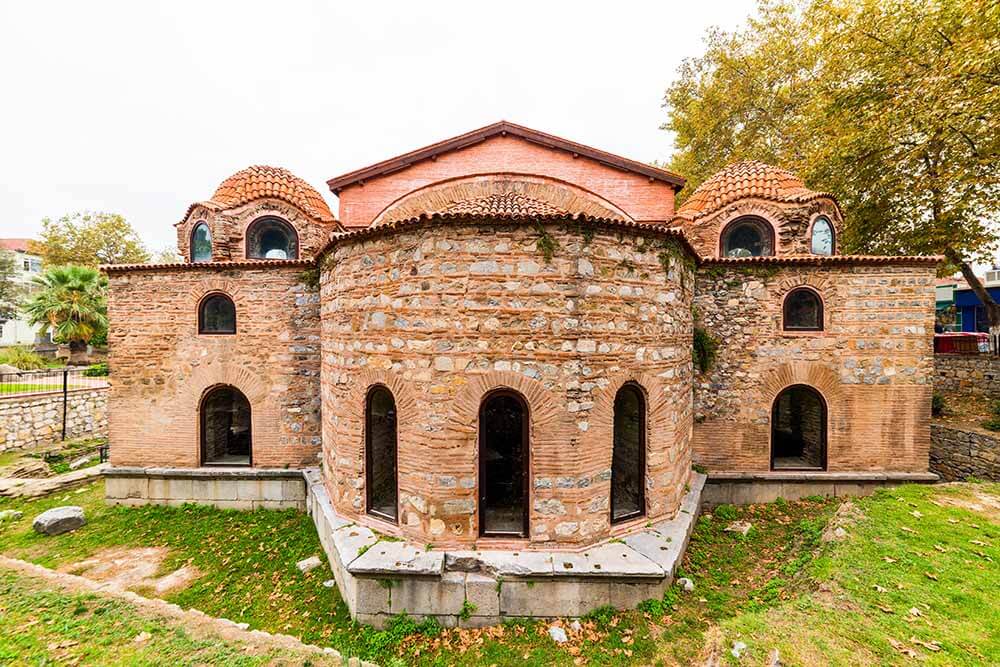Pope Francis’s recent pilgrimage to Iznik, modern-day Turkey, has cast a brilliant spotlight on one of Christianity’s most foundational texts: the Nicene Creed. Once known as Nicaea, this historic city was the crucible where the early Church wrestled with profound theological questions, culminating in the formulation of the Creed that defines Christian doctrine to this day.
This papal visit is far more than a historical footnote; it’s a powerful move for interfaith dialogue, a call for Christian unity, and a potent reminder of the Creed’s enduring relevance for the global Church and modern spirituality.

Nicaea: The Cradle of Orthodoxy
The name Nicaea (Iznik) is synonymous with the first two Ecumenical Councils—the First Council of Nicaea (325 AD) and the Second Council of Nicaea (787 AD).
- First Council (325 AD): Convened by Emperor Constantine the Great, this Council addressed the Arian controversy, which challenged the divinity of Christ. The result was the original Nicene Creed, a definitive statement affirming the belief in Jesus Christ as “true God from true God,” consubstantial with the Father.
- Second Council (787 AD): This gathering dealt with the contentious issue of iconoclasm (the destruction of religious images), ultimately affirming the veneration of icons as a legitimate and essential spiritual practice.
Pope Francis’s physical presence in Iznik underscores the geographical and historical roots of the Creed, reminding Christians everywhere that their shared faith has a tangible birthplace.

The Nicene Creed: More Than Just Words
The Nicene Creed, particularly in its later form, is recited every Sunday by billions of Christians across the Catholic, Orthodox, Anglican, and many Protestant denominations. It stands as the single most widely accepted statement of faith in Christianity.
Key Theological Pillars of the Creed:
| Theological Concept | Creed Statement |
| Monotheism | “I believe in one God…” |
| Divinity of Christ | “…begotten, not made, consubstantial with the Father…” |
| The Trinity | “…and in the Holy Spirit, the Lord, the giver of life…” |
| Church Unity | “…one, holy, catholic, and apostolic Church.” |
The Creed provides the essential theological framework that binds diverse Christian traditions, making the Iznik pilgrimage a powerful gesture toward ecumenical rapprochement.

A Papal Plea for Christian Unity and Dialogue
The Pope’s journey to the ancient heartland of the Creed serves as a potent, modern-day ecumenical effort. For centuries, the differing interpretations of the Creed (notably the Filioque clause) have been a source of division between the Western (Catholic) and Eastern (Orthodox) Churches.
The Filioque clause, Latin for “and the Son,” is a key theological addition made to the Nicene Creed in the Western Church (Roman Catholic), which states that the Holy Spirit proceeds from “the Father and the Son” rather than from “the Father alone” as affirmed by the Eastern Orthodox Church and the original Greek text of the Creed. This interpolation was gradually adopted in the West, partly to emphasize the full divinity of Christ (the Son) against Arianism, but it became the central doctrinal point leading to the Great Schism of 1054. The Eastern Church objected primarily on the grounds of theology, maintaining that the Father is the sole source of divinity within the Trinity, and ecclesiastical authority, arguing that the change was made without the consent of an ecumenical council, thus violating Church tradition and unity.
By visiting Iznik, Pope Francis is essentially saying: Let us return to the source. He is signaling a commitment to a common origin and a shared faith declaration.
“The legacy of Nicaea is a call to all Christians to recognize the profound unity that predates our divisions. It is a foundation for peace, not just among Christians, but with all people of faith.”
– A Church Historian on the Iznik Pilgrimage
Furthermore, the visit to a predominantly Muslim country highlights the vital necessity of interfaith dialogue and mutual respect, demonstrating that acknowledging the deep roots of one’s own faith can be a pathway to understanding others.

Why the Nicene Creed Matters Today
In an age of rapid secularization and evolving spiritual perspectives, the Nicene Creed offers an anchor of tradition and a clear articulation of core beliefs.
- For Believers: It reinforces identity and provides a stable, historical context for faith.
- For Seekers: It acts as a concise summary of Christian theology, answering fundamental questions about God, Christ, and the Church.
- For Ecumenism: It serves as a working document for reconciliation, focusing efforts on the vast shared ground rather than the points of division.
Pope Francis’s Iznik pilgrimage is a historic milestone. It is a masterstroke of religious diplomacy that uses a landmark of the past (Iznik) to inspire the future—a future defined by deeper Christian fellowship and strengthened global peace initiatives. It is a testament to the enduring power of the Nicene Creed to unite and define the Christian world.

